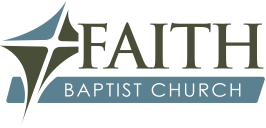We are about to walk into the very heart of God with this study of the tabernacle. In chapters 25-31, we are going to examine a blueprint for the tabernacle just as God gave it to Moses on Mount Sinai. It is some very weighty reading and much of the teaching tends to get swallowed up in the details. However, then we will watch the actual building of this masterpiece in chapters 35-40. This tabernacle was an actual building for not only the meeting of God with his people but also where the priest would offer sacrifices for the sins of the people to bring about a complete fellowship with God. In the first fifteen chapters of Exodus, we enjoyed God’s leading of Moses and the people of Israel out from captivity in Egypt. The next nine chapters reveal God’s sovereignty in leading this motley band of wanderers through the wilderness and right up to the borders of the land they had only dreamed about entering. Now we are going to learn about the tabernacle where God was to make his holy habitation and speak to man. A study of the tabernacle is vital for the maturity of the Bible student because fifty chapters in Scripture are devoted to a discussion of the tabernacle.
Worship always comes first. God did not wait until Israel was settled in the land to instruct them in proper worship. He saw it as a special priority and planned for it from the outset. This taught the Israelites always to place God first in their lives and that no inconvenience should ever bar them from honoring God. The purpose for them “plundering” the Egyptians of their goods was not for personal or national enrichment but to provide for the worship of the living God. Accordingly, God instructed Moses to tell the people to bring a freewill offering. In Scripture, God requires gifts from willing worshipers. This seems almost like a contradiction but yet it is true. From their precious metals they were to offer gold, silver, and bronze. The craftsmen would use these to overlay boards, make dishes, and other like items for the tabernacle. Next they were to offer up cloths of blue, purple, and scarlet (probably wool dyed by some of the natural resources from Egypt, such as indigo from Egypt and, for the purple, shellfish). Other items included goat hair, ram skins, and the hides of sea cows, all of which would be made into cloths and various coverings. They needed to provide wood for the tabernacle furniture, olive oil for the lamp, and spices for the scented oil and incense. The precious stones would be set in the ephod and breastplate. From these materials they would make a sanctuary for God’s dwelling, one in which, if they made everything according to the pattern God showed them, God would be pleased to dwell. God allowed for no deviation from the precise pattern he showed them. God still desires that we worship Him out of a decision of our own will. I believe He asks us to give back to Him so that we can show that nothing is more important to us than our God.
Personal Prayer Requests:
- Lord, please help me to consistently honor you with true worship from my heart.
- Lord, please help me to make you my top priority and to demonstrate that with the use of that which you have entrusted to me.
- Lord, thank you for your willingness to meet with me and talk with me.

